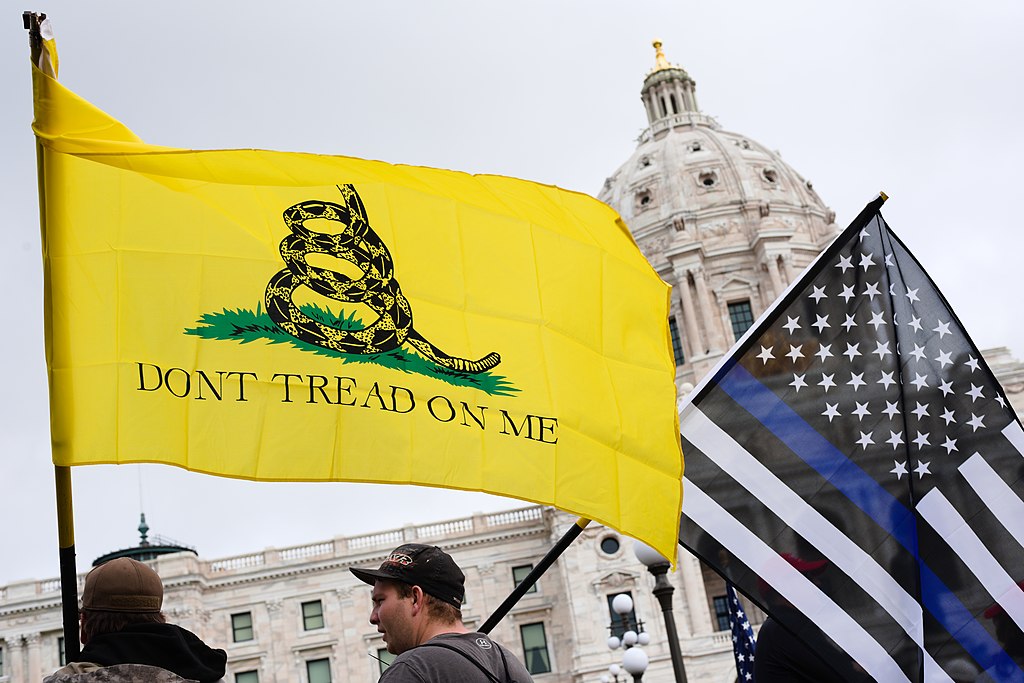At some point, you have certainly seen or heard about the Gadsden flag, maybe known better as the “Don’t Tread On Me” flag. Created by Christopher Gadsden in 1775, the iconic yellow flag with a coiled-up rattlesnake is known as the most popular symbol of the American Revolution.
Its purpose? A warning to Britain to not tread upon the rights of Americans. Essentially, the flag was the original “f%*k around and find out” challenge, and, for generations stood as a symbol of how defiance is intertwined with the American spirt.
The flag, which once stood as a symbol of resistance to government tyranny and noncompliance to authority, has in recent times undergone a perplexing transformation, leaving those with an understanding of U.S. history scratching their heads.
Once a banner of rebellion and individual liberty, the flag is now often used in ways that contradict its original intent; for example, when the Gadsden flag is flown beside the “Thin Blue Line” American flag, also known as the “Blue Lives Matter” flag.
The “Blue Lives Matter’’ flag gained popularity in recent years as a response to the Black Lives Matter movement and represents admiration and unwavering support to law enforcement. Basically, the “Blue Lives Matter” flag is everything the “Don’t Tread on Me” flag opposes.
Think about it. The “Gadsden” flag is a warning to authority. The “Blue Lives Matter” flag is about backing that same authority. Mixing these flags is confusing since both flags represent opposing ideologies.
The identity crisis of the Gadsden flag serves as a reminder that the meanings associated with symbols are not fixed but are subject to interpretation and manipulation. As our world changes, so too do the symbols that define our ideals and values.
For better or worse, the flag that was once an emblem of defiance and rebellion has turned into what it originally sought to oppose. The snake, once wary of the boot, now finds itself in an unexpected place– flying alongside the boot, supporting it, and symbolizing a profound transformation that raises questions about the flag’s enduring legacy and the evolution of symbols in our ever-changing world





